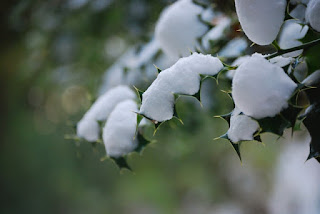Will those plants survive the winter where you live?
Nearly every plant catalog and label comes with valuable
information for each plant to help gardeners like you enjoy growing success.
One of those info bits might read something like this, “Zone: 3 to 8”. But what
does it mean for you? You'd better check out the climate map.
Making sense of local climates
Climatologists and horticulturists have long tried to make
sense of the earth’s geography and climate to better understand how plants
relate to their environments, and how they might perform in them. Such knowledge
would help farmers and gardeners enjoy success. So climate zone maps were
developed, sort of like road maps to benefit just about anyone who worked with
plants. There was a lot riding on it, too, not only for gardeners, but because
entire industries relied on the data for their businesses.
They had to gather and study climate data collected over
many years. Imagine the many locations throughout the U.S. where weather
statistics had to be recorded, then collated. That was a huge undertaking.
A short history of climate map-making
In 1990, the U.S. Department of Agriculture (USDA) published
a climate zone map based upon data spanning the years from 1974 to 1986. The
American Horticultural Society produced a map in 2003 from info gathered from
1987 to 2002. The Arbor Day Foundation released a map in 2006 from statistics
taken from 1990 to 2005.
As you might expect, the climate zone delineations differed,
which made matters rather confusing. In some cases, a location on one map would
be in a different climate zone than on another. The spans of years differed.
The locations of data gathering differed. So did their conclusions. Frankly,
there were some areas of the country where climate data wasn’t gathered at all.
Perhaps it was because they were inaccessible, or there were just too many
places to actually study.
Then, the USDA published another map in 2012 based on a
larger sampling of data from 1976 to 2005. It’s called The USDA Plant Hardiness
Zone Map, and is the one in use today. It used an algorithm developed by the
University of Oregon PRISM Climate Group. The method involved estimating
climate conditions, which seemed like a pretty good idea.
How to read the map
The map shows a series of lines winding in and out of
various parts of the U.S. Sometimes you’ll see enclosed patches or circles.
Some of the spaces are very wide. Other spaces are quite narrow. The spaces
between the lines are color-coded. These represent separate climate zones.
There are 26 of them. You’ll see 1a and 1b, 2a and 2b, 3a and 3b, and so forth,
all the way through 13a and 13b. Each of those zones represents a 5-degree
Fahrenheit temperature range, and a corresponding range in Celsius.
Here’s an important point. The map is based upon the average
annual minimum temperature. It says nothing about heat, humidity, or any other
climate condition. What that means for any particular plant is that it is
likely to survive the winter in whatever zone it’s rated for. If the plant is
rated for zone 6, it will likely survive a minimum winter temperature of minus
10-degrees F. At any rate, the map only suggests the likelihood of survival;
it’s not a guarantee.
The times they are a-changin'
I used to keep a large printed copy of the 1990 USDA map in
my garden shop to display to shoppers, with a bright red push pin to show where
we were located. If they were from another county or state, we’d find it on the
map. “There---it---is---right-----THERE.” Those days are over. Though less
nostalgic, the new map is downloadable to your computer, or you can use the
interactive map on the USDA website. All you do is type your zip code into the
field provided, press “enter" and Voilà!
You have your zone.
I don’t have the map on my wall now, and even if I did, you
wouldn’t be able to see it. So, I’ve progressed with the times. I’ve included a
link on every description page of my online plant catalog. If you’re
considering whether a plant is right for your climate zone, just click the
link. You’ll be taken to the USDA site under a separate tab (so you don’t lose your
place in my catalog).
See for yourself
Check it out. Go to the plant catalog at GoGardenNow.com,
and see the USDA Plant Hardiness Zone Map in action.
While you're there, be sure to sign up for our newsletter so you can be among the first to receive GoGardenNow news and gardening tips.






No comments:
Post a Comment